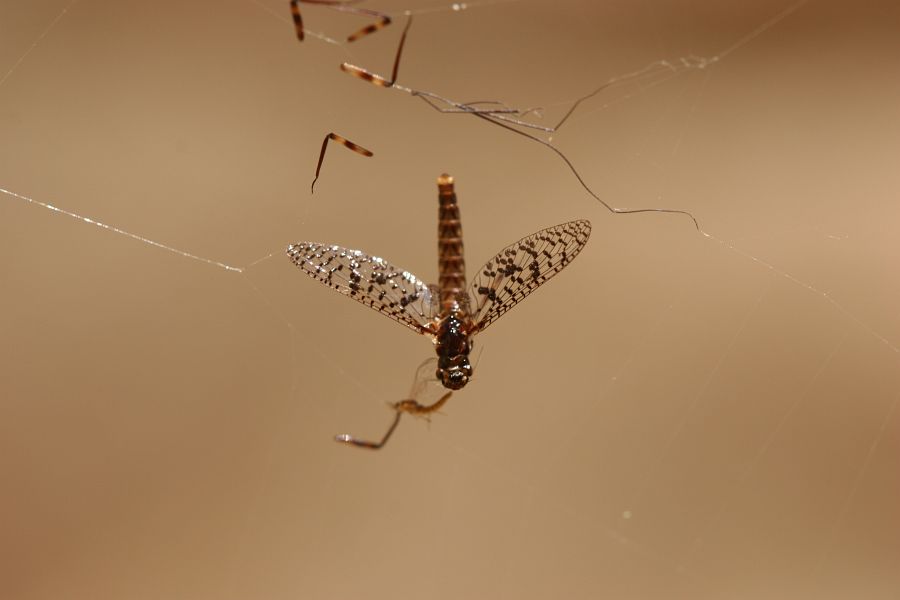PHOTOGRAPHING INSECTS ABOVE AND BELOW WATER
There was a stage in my fly fishing life when I spent hours bent over ice cream tubs filled with pebbles photographing insects in a river bed and I guess in the end we got it down to a fine art. Eddie Gerber, a Cape Town based fly fisher and building contractor, was central to this period in my fishing and we managed to refine what was needed, but never enough to get rid of the heap of clutter we found ourselves hauling up and down rivers.
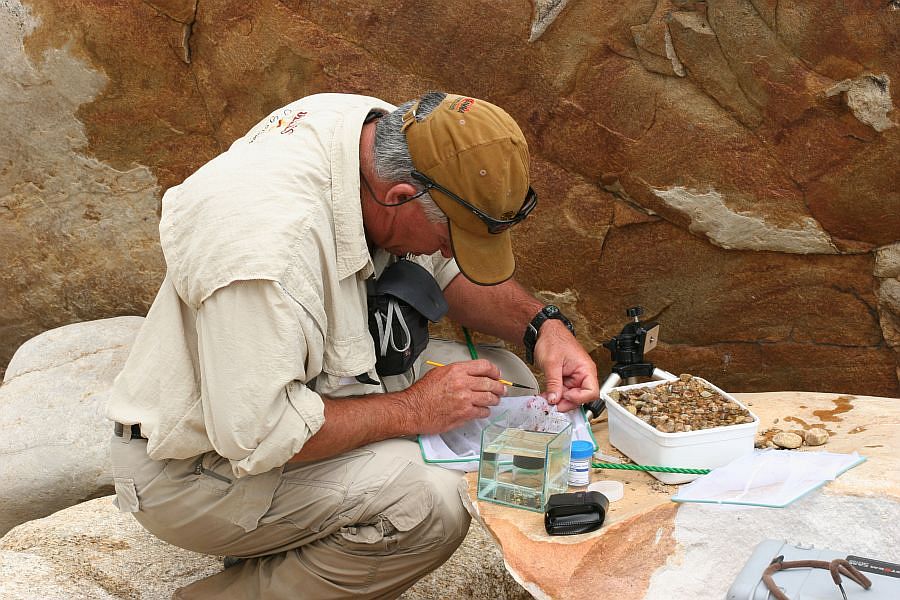
Ed Gerber at work sorrounded by all the gear
Basic equipment included an empty ice cream tub, a fine paint brush for handling bugs, a clear Perspex tank or a slant tank, a small portable tripod, a fine-meshed net and, of course, a compact point and shoot camera with good macro capability. I will speak about SLR cameras later.
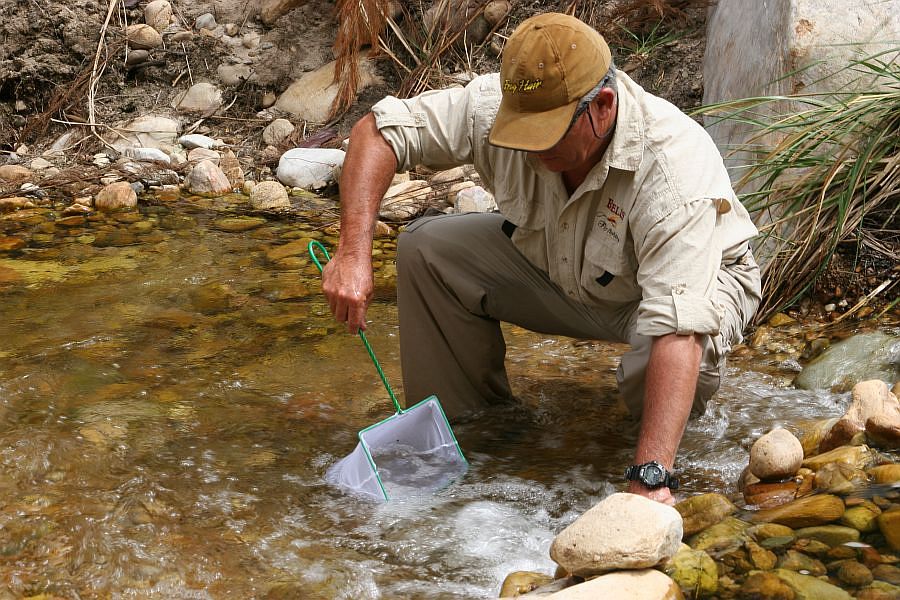
The routine is easy enough. To collect bugs you shake up pebbles in the stream bed to dislodge them and then filter the cloudy water through a net placed a foot or two downstream. The hauls are often remarkable. If it taught us a lot about insects, it also taught us just how densely they’re distributed on the average river bed.
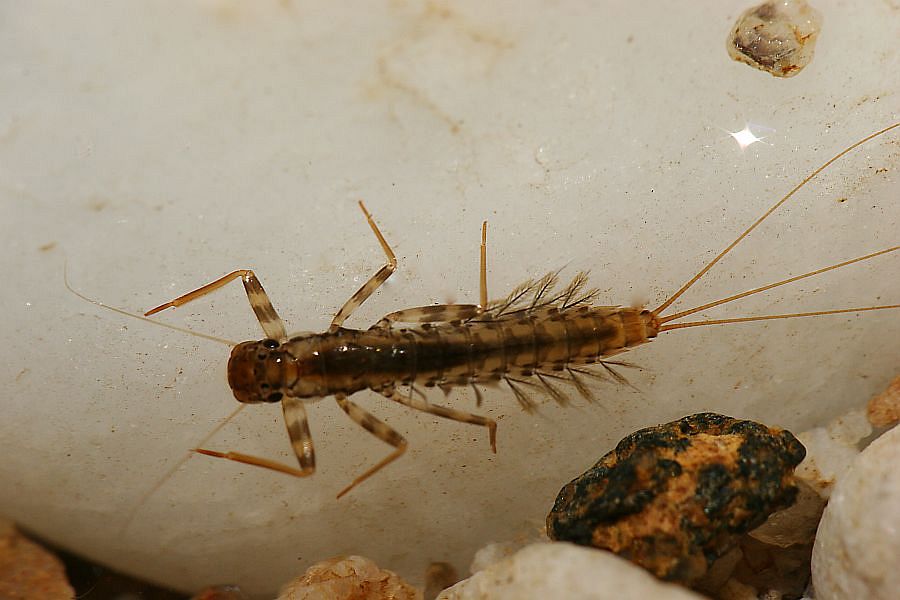
A typical mayfly nymph resting on pebbles just under water
The ice cream tub is first loaded with pebbles and gravel from the area you are collecting insects and filled nearly to the brim. The pebbles should first be sieved in a colander to get rid of dirt. The tub is then submerged in the current for 10 or 15 minutes to fill with water and really run clean and then it’s placed on level ground (but not in direct sunlight) and allowed to settle.
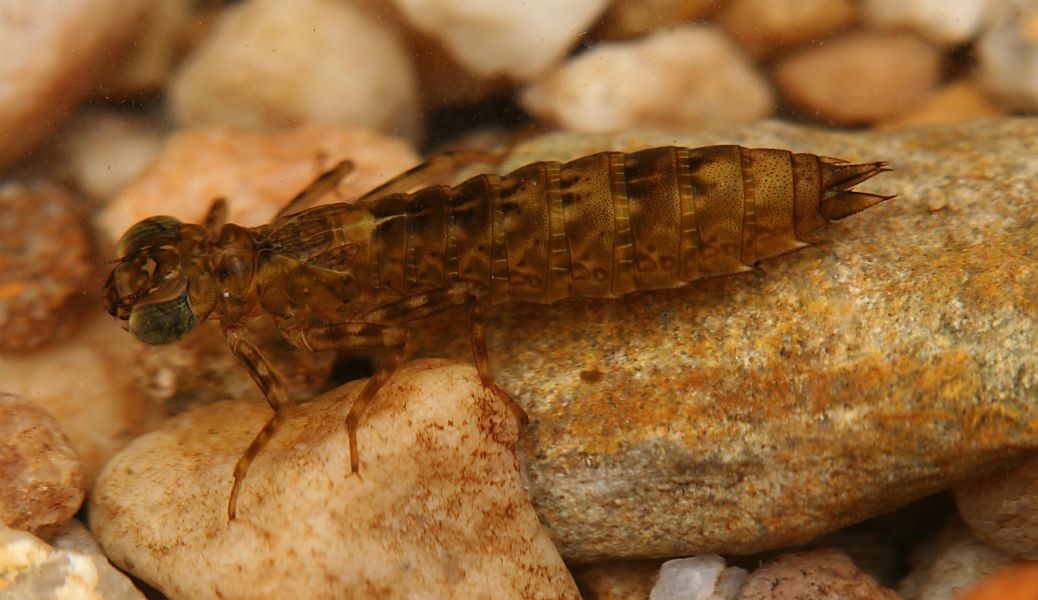
A Dragonfly nymph
Once the bugs are trapped in the collecting net the mesh is carefully inverted and the insects are lifted off with the point of a fine paint brush to avoid damaging them. They are then placed in the tub and allowed to swim free in the shallow water above the gravel and pebbles. They will eventually settle. That’s when you line up the camera.
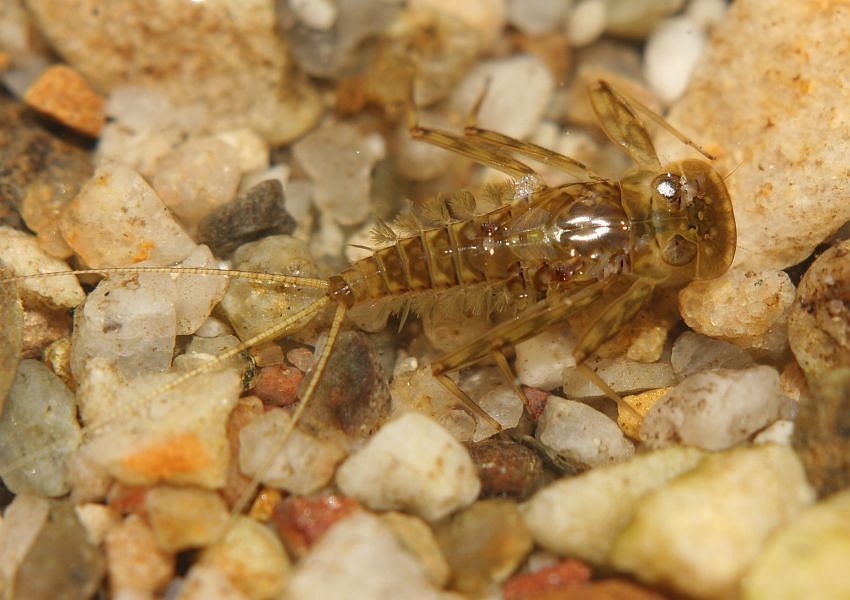
A common mayfly in Cape streams
Clear tanks are useful as well, either plain clear-sided boxes or slant tanks, where a mirror is mounted at an angle at the back of the tank to reflect the water surface. Fill the tank with well cleaned pebbles and gravel, add water and introduce the bugs.
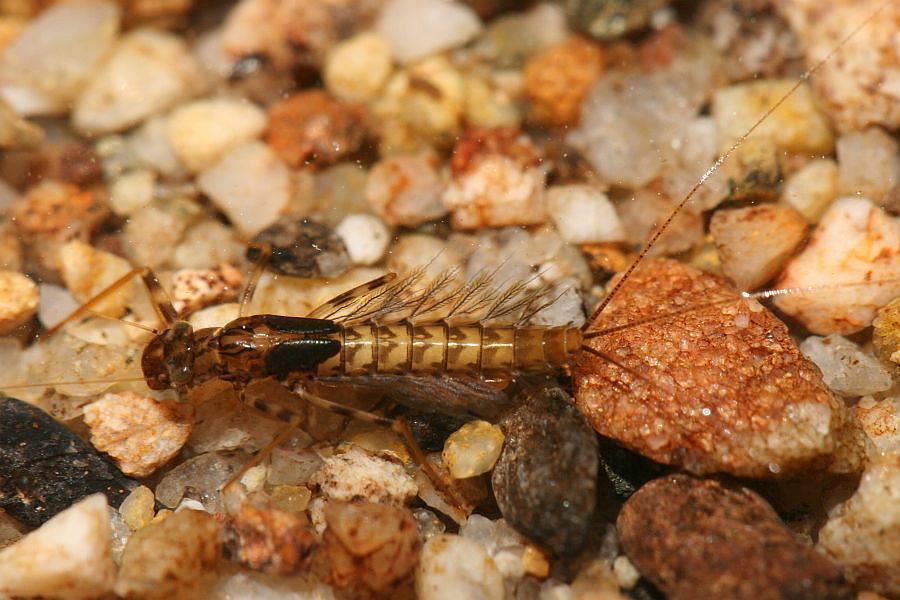
Mayfly nymph photographed through a clear-sided tank. Note the residual bubbles clinging to the side
The downside to this method is bubbles tend to cling to the clear Perspex walls. The best way of removing them is with a paint brush. The real advantage of the mirrored slant tank is that simply filling it with water (no gravel added) allows you to photograph an insect from below while it floats on the surface.
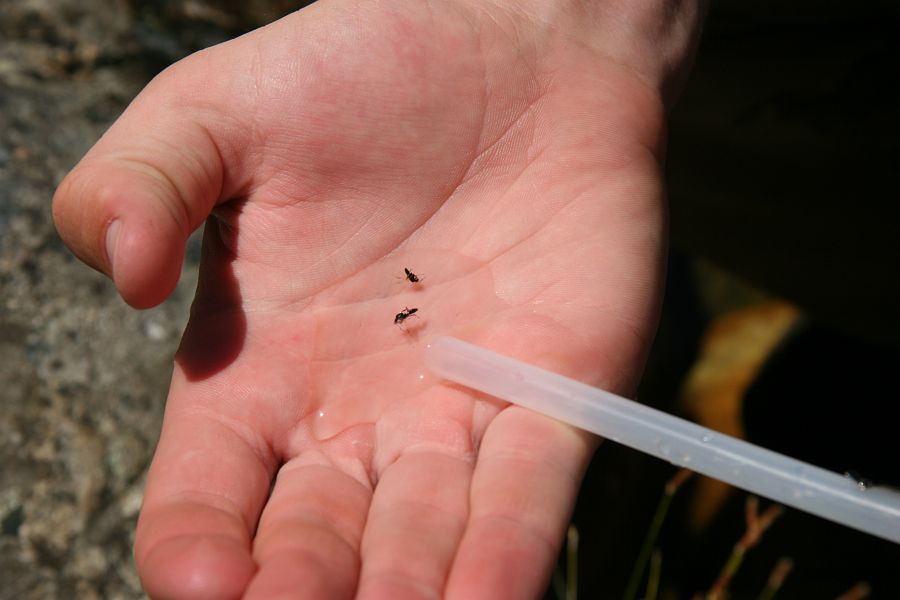
The other bug collection method, using a stomach pump, is well known, but I have always been reluctant to use a pump on small fish for fear of damaging the gastric lining. We always do it very gently, first filling the bulb with around 10mls of water, then depressing the bulb half way before inserting it. Once in the stomach, the bulb is fully squeezed so that the water flows out and into the stomach cavity. Then very gently and slowly, release your squeeze, causing the injected water to be drawn back into the bulb along with any insects that happen to be around.
For lake trout a stomach pump, though, is very useful.

Bloodworms from a lake trout
Photographing adult insects is largely a product of patience and the opportunistic good fortune of finding yourself in the right place at the right time.
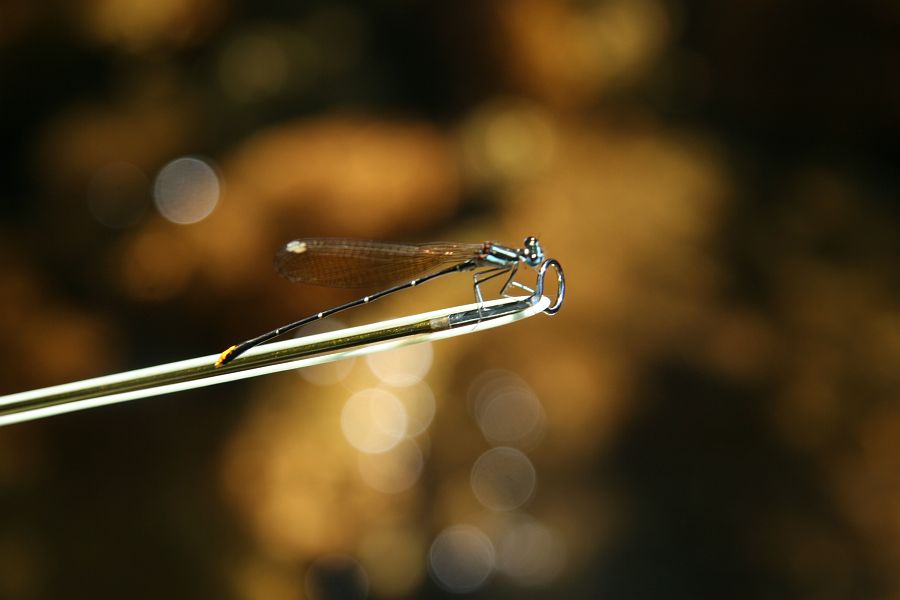
Both the dragonfly above and the mayfly below were shot with an SLR on a 100 mm macro lens on manual focus
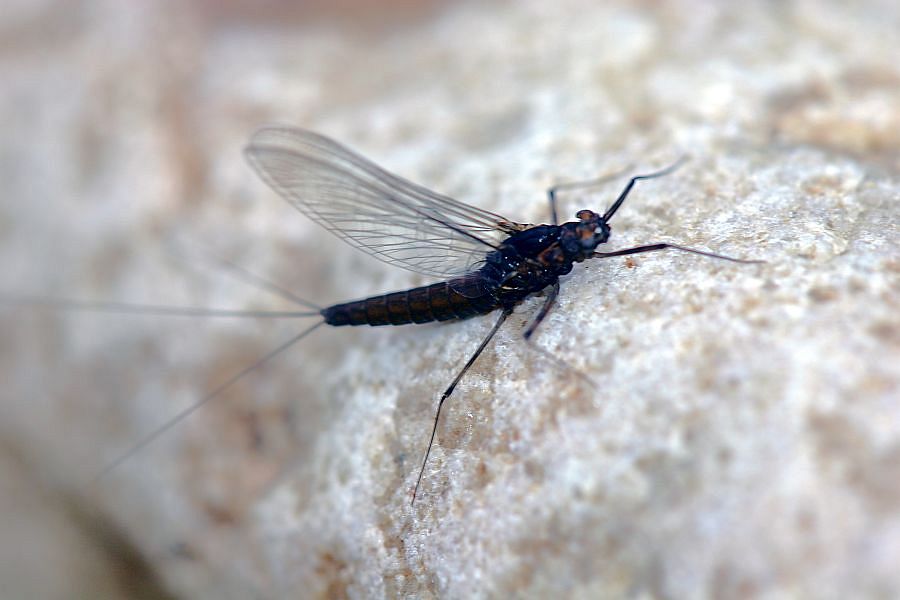
Here an SLR camera used on manual focus is far better because it allows you to photograph further away from the insect and so avoid spooking it.
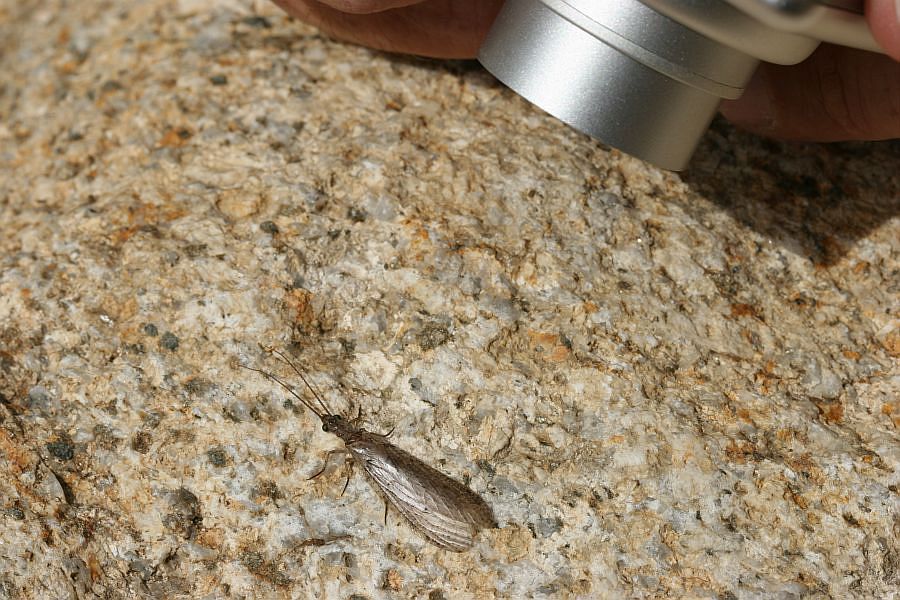
Notice how close you must get to an insect with a point and shoot camera. (The insect here is an adult Dobsonfly)
And by the way, spider webs can be a treasure trove of trapped bugs.
